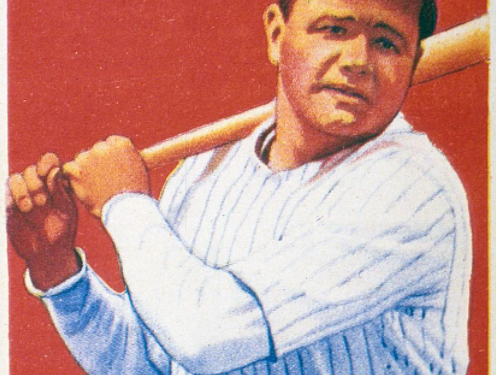If you walk into your neighborhood Target or Walmart, most things have returned back to normal. Paper towels, disinfectant wipes and toilet paper (thank God) have seemingly returned back to normal.
But one section seems noticeably barren; almost apocalyptic.
The sport and trading card shelves have been empty, or close to it, since last March. But it’s not because these stores have nothing to sell, it is because their stock is sold out within minutes.
The sports trading card industry has made a serious comeback during the pandemic, as kids from the “Golden Age” of sports cards (the 1980s and 1990s) are now adults with real incomes.
Most people associate sports cards with baseball cards because that was the most popular sport in the hobby during its early stages, but today, basketball and football cards have surpassed baseball cards in production and sales.
There are multiple reasons for the boom in the sports card industry other than quarantine boredom.
First, there is some serious money to be made in this hobby.
Say that back in May, you went to Target and got lucky in finding a $20 box that consists of 24 NBA trading cards. You open the box and find a Zion Williamson card, by far the hottest rookie card from the class of 2019-2020. On the trading website Dave and Adam’s Card World, you could sell that card today for over $200. And the prices were even higher for his card last summer.
Even more money is to be made in the boxes themselves rather than most individual cards. If you decided to save that same box you found in Target until today, you could sell it on eBay for over $400. Keep in mind that these boxes at one point were originally being sold at Target and Walmart for $20.
People are still going the length to buy these extremely expensive items on eBay. The hobby is not slowing down because of it, at least as of now.
However, there are still ways to find cheap, retail price cards at Target and Walmart, which are the only stores that have contracts with Panini, the most popular sports card company today. Many stores have placed signs on their sports card shelves that limit customers to buying two trading card items maximum. Before this, some collectors would fill their shopping carts with boxes of cards, leaving none for the remaining customers.
Recently, some stores, including the Target at Brookwood, have introduced a “first come first serve” time that the store will have cards available for purchase.
The Brookwood Village Target has their time set for 8 a.m. on Fridays, and at that same time every week, a line of roughly 20 to 60 collectors are lined up outside of the store. This insane display of card-hungry collectors is a very recent trend, and no one really knows if it will continue.
The hobby has some serious issues to address about its future, but as of now, business is booming. It seems that no matter what happens with the price manipulation of these cards, people are willing to spend their money to get them.
To the hobby’s credit, it can be a thrilling experience. With every pack opened, you have the chance of finding a card that can pay for college tuition. A 1986 Michael Jordan rookie card in mint condition can be worth up to $50,000.
The most expensive individual card ever sold, a Lebron James rookie card that included a piece of his jersey and his autograph, was sold last July for $1.8 Million. There were only 23 of those exact cards made in 2003.
It is a hobby that you can pass on to your kids, which is why so many teens and college students are finding their way into the hobby. The question remains, will the price surge and market manipulation ruin the hobby? Will it become a hobby only for the rich and elite? No one really knows.
But one thing is for certain: opening a pack of cards is an incomparable feeling that will always bring joy to sports fans young and old. There is no question as to why the industry is making a comeback, the questions only surround its unforeseeable future.







